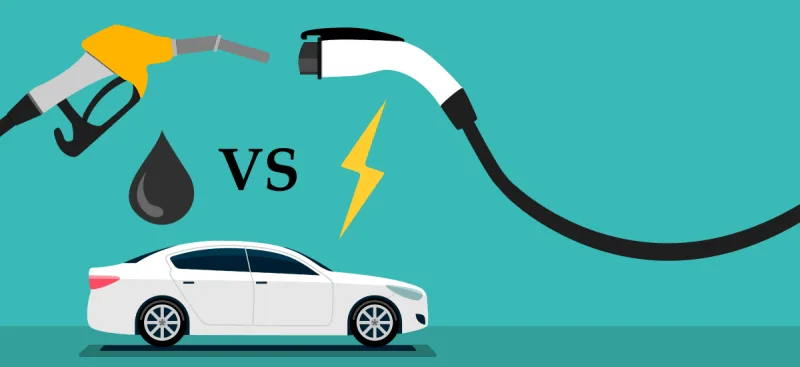
Introduction
Welcome to a journey through the labyrinth of Indian automotive innovation—or, more accurately, the lack thereof. For over three decades, robust 4-cylinder engines have powered cars with a roar that could be heard on busy highways and quiet country roads alike. Yet now, in a move that leaves purists and enthusiasts bewildered, leading automakers in India are downshifting to 3-cylinder engines. Maruti, Hyundai, VW, Tata—and yes, even Mahindra—are trading in the muscle of yesteryears for what can only be described as a thin whisper of power. And it doesn’t stop there: manufacturers such as Kia, Nissan, Renault, and Citroën have also introduced 3-cylinder models in India, further cementing this controversial trend.
Let’s delve into the irony of it all, as we ask the hard questions: Is this genuine innovation, or are we simply being bamboozled by cost-cutting strategies? And why has it become nearly impossible to own a naturally aspirated 1.5-liter manual 4-cylinder car in India? In this editorial, we’ll explore these questions with a generous dose of sarcasm, critical insight, and unabashed honesty.
The Era of 4-Cylinder Glory
Not too long ago, 4-cylinder engines were the pride of the automotive world in India. They were synonymous with power, reliability, and a driving experience that was as smooth as butter. Cars like the Maruti SCross with its 1.5-liter naturally aspirated engine, Honda’s 1.8-liter NA engine, and the VW models that roared with turbocharged 2.0-liter units were the benchmarks of performance. These engines delivered robust torque, impressive acceleration, and a distinctive engine note that thrilled drivers. Yet today, these stalwarts are rapidly vanishing from showroom floors.
The Downshift Trend: A Cost-Cutting Excuse?
Indian automakers now claim that switching to 3-cylinder engines improves fuel efficiency and reduces emissions—a commendable goal on paper. But let’s not be fooled: this shift appears to be more about slashing production costs than about genuine technological progress. Maruti’s latest 1.2-liter 3-cylinder engine, for instance, produces noticeably less power and torque than its 4-cylinder predecessor. Hyundai’s i20, once known for its refined performance, is now being reconfigured with a smaller, more “efficient” 3-cylinder unit that, in reality, sacrifices driving pleasure for marginal gains in fuel economy.
Even Mahindra, a brand that once prided itself on rugged performance and innovation, has joined the downshift bandwagon. Their recent models now sport 3-cylinder power plants that many critics argue are a step backward from the robust 4-cylinder engines that once defined the brand. And it’s not just the Indian giants; global players like Kia, Nissan, Renault, and Citroën have all introduced 3-cylinder models tailored to the local market’s demand for cheaper, fuel-efficient vehicles.
A World Apart: Global vs. Indian Trends
Globally, downsizing engines has become a trend—but with a twist. In markets like Europe and North America, manufacturers are investing heavily in turbocharging, hybrid technology, and advanced engine management systems to ensure that even smaller engines deliver impressive performance. The key difference is that these advancements maintain, or even enhance, the driving experience. In contrast, in India, the shift to 3-cylinder engines seems to be driven predominantly by economic factors. While fuel efficiency is undoubtedly important in a price-sensitive market, the dramatic drop in performance is hard to ignore. Enthusiasts are left yearning for the days when a 4-cylinder engine meant true driving excitement.
The Dwindling Availability of 4-Cylinder Cars
To add insult to injury, owning a naturally aspirated 1.5-liter manual 4-cylinder car in India has become an almost Herculean task. The once-popular models are now relics, surviving only in limited numbers. Consider the current lineup: only a handful remain—like the Skoda with its 1.5-liter turbo engine, VW’s similarly tuned 1.5-liter turbo unit, the Maruti Ciaz with its 1.4-liter naturally aspirated engine, Honda’s elusive 1.5-liter NA engine, and Hyundai’s Verna sporting a 1.5-liter turbo engine. For a consumer who values the unadulterated, raw driving experience of a 4-cylinder engine, the options are dwindling faster than you can say “downshift.”
The Price of Performance: What’s the Real Cost?
Let’s not mince words: when automakers trade power for economy, the consequences are palpable on the road. A 3-cylinder engine, by design, has fewer moving parts, which might lower production costs. However, fewer cylinders also mean that each cylinder must work harder, often leading to increased vibrations, reduced smoothness, and a noticeable lack of grunt. This isn’t just a matter of numbers on a spec sheet—it’s the tangible feel of a car that once roared with confidence now humming along meekly.
Take, for example, the new Maruti Swift. Once celebrated for its zippy, energetic performance, its replacement 3-cylinder engine now delivers a power output that is a shadow of its former self. The same can be said for Hyundai’s recent adjustments. The irony is palpable: in a market known for its love of robust performance, consumers are forced to compromise, settling for what many consider a “downshift” in innovation.
Consumer Backlash and Social Media Outcry
The reaction among car enthusiasts has been nothing short of explosive. Social media platforms are buzzing with memes, scathing reviews, and heated debates. One popular tweet read, “3 cylinders? That’s not an engine—it’s a suggestion!” while another lamented, “I miss the days when my car had the guts to roar instead of just whispering weakly.” Such outpourings of frustration are a testament to the disconnect between automakers’ cost-saving measures and consumer expectations. Drivers want power, reliability, and that unmistakable engine note that defines the driving experience—and they’re not getting it.
Mahindra Joins the Downshift Debate
Adding to the controversy, Mahindra—a name once synonymous with rugged performance—is now part of the downshifting trend. Once a proud purveyor of robust 4-cylinder engines that could handle rough terrains and deliver uncompromised performance, Mahindra has introduced models with 3-cylinder engines. This move, while perhaps understandable from a cost perspective, leaves many long-time fans wondering if the brand is abandoning its legacy of powerful, dependable machines in favor of cheaper, less impressive alternatives.
Other Global Players: Kia, Nissan, Renault, Citroën and More
It’s not just the domestic giants that are riding the 3-cylinder wave. International brands like Kia, Nissan, Renault, and Citroën have also launched 3-cylinder models in India, targeting the ever-growing demand for economical, compact cars. While these brands often tout advanced technologies to extract performance from smaller engines, the fundamental issue remains: in a market where 4-cylinder engines once reigned supreme, these 3-cylinder offerings feel like a compromise rather than a genuine upgrade.
The Broader Implications for India’s Auto Industry
What does this trend mean for the future of automotive innovation in India? Quite simply, it raises a serious question: are we witnessing a genuine evolution in engine technology, or is it a calculated step backward driven by short-term economic concerns? The answer isn’t straightforward. On one hand, advancements in turbocharging and hybridization mean that smaller engines can theoretically deliver performance comparable to larger ones. On the other hand, when it comes to naturally aspirated 4-cylinder engines, the market has seen a steady decline in availability—leaving behind only a few relics that many enthusiasts hold dear.
The difficulty in finding a 1.5-liter naturally aspirated 4-cylinder manual car is symptomatic of a broader industry trend. For many consumers, owning such a car has become a luxury, a throwback to an era when performance was king. Today, if you want the raw, unfiltered driving pleasure that a well-tuned 4-cylinder engine can deliver, you’re fighting an uphill battle against a tide of 3-cylinder compromises.
The Irony of “Efficiency”
Automakers argue that 3-cylinder engines offer improved fuel efficiency and lower emissions—important factors in today’s environmentally conscious world. However, this efficiency often comes at the cost of performance. It’s a paradox that has not escaped the notice of critics: while the world around us races toward electrification and advanced hybrid systems, the Indian market seems content with downsized engines that barely muster a whisper of their former glory. Efficiency should not mean a downgrade in the very essence of what makes a car exciting to drive.
A Call for Real Innovation
The automotive industry in India is at a crossroads. While the need for cost efficiency and meeting emission standards is undeniable, true innovation should not mean merely reducing the number of cylinders. It’s time for automakers to invest in technologies that allow smaller engines to deliver the robust performance of their larger counterparts. Hybrid systems, advanced turbocharging, and innovative engine management technologies could provide the best of both worlds—efficiency without sacrificing the thrill of driving.
Conclusion
In a market that once celebrated the power and smoothness of 4-cylinder engines, the current trend toward 3-cylinder power plants is as baffling as it is controversial. Automakers like Maruti, Hyundai, VW, Tata, and even Mahindra are embracing this downshift—not out of a lack of ingenuity, but out of a need to cut costs and meet increasingly stringent regulations. Meanwhile, international brands such as Kia, Nissan, Renault, and Citroën are also riding the 3-cylinder wave, further signaling a market-wide shift.
But for those who remember the days when a car’s engine roared with confidence—a time when naturally aspirated 1.5-liter manual 4-cylinder engines were the benchmark of performance—the present is a bitter pill to swallow. Models like the Skoda 1.5L turbo, VW’s similar offering, the Maruti Ciaz 1.4L NA, Honda’s 1.5L NA, and Hyundai Verna’s 1.5L turbo are now few and far between, relics of a bygone era that many feel should have evolved rather than diminished.
As we stand at this crossroads, it’s clear that true innovation is not about merely cutting costs or meeting emission norms—it’s about preserving the passion, power, and performance that make driving a joy. The trend of downshifting to 3-cylinder engines in India may save a few rupees in production, but it comes at a steep price: the erosion of the driving experience that many Indian car enthusiasts hold dear.
So, dear readers, as you take your next drive, ask yourself: Are you witnessing a genuine leap forward, or is it simply a retrograde step—a downshift that leaves us all longing for the roar of a true 4-cylinder engine? Share your thoughts, ignite the debate, and let’s demand better from an industry that once promised the very best in automotive innovation.
FAQs
1: Why are automakers in India switching to 3-cylinder engines?
Mainly to reduce costs and meet emission norms, even though this compromises power and performance.
2: How do 3-cylinder engines compare to 4-cylinder ones?
They generally produce less power and torque, leading to a less engaging driving experience.
3: Is this trend unique to India?
While global markets also explore downsizing, India’s cost-sensitive market pushes this trend further.
4: How difficult is it now to own a naturally aspirated 1.5-liter manual 4-cylinder car in India?
Extremely difficult—with only a handful of models (Skoda, VW, Maruti Ciaz, Honda, Hyundai Verna) remaining, they are now rare gems.
Thesaurus
-
Downshift: A deliberate move to lower performance; here, a regression in engine technology.
-
Retrograde: Moving backward; indicative of a decline rather than progress.
-
Underpowered: Lacking sufficient power; noticeably weaker performance.
-
Stagnant: Not evolving; marked by little to no technological progress.
-
Conservative: Unadventurous; a reluctance to embrace new ideas.
-
Inept: Lacking skill or competence; clumsy in design execution.
-
Mediocre: Average; not meeting the high standards of innovation.
-
Paradoxical: Contradictory; seemingly illogical when compared with global trends.
-
Myopic: Short-sighted; ignoring long-term performance benefits.
-
Insipid: Bland; lacking flavor or excitement.
-
Cynical: Distrustful; viewing moves as profit-driven rather than innovative.
-
Redundant: Superfluous; offering nothing new compared to older models.
-
Antiquated: Outdated; relics of an earlier era in technology.
-
Pernicious: Harmful; damaging in the long run.
-
Disingenuous: Not sincere; deceptive in claiming innovation.
So, dear readers, as you take your next drive, ask yourself: Are you witnessing a genuine leap forward, or is it simply a retrograde step—a downshift that leaves us all longing for the roar of a true 4-cylinder engine? Share your thoughts, ignite the debate, and let’s demand better from an industry that once promised the very best in automotive innovation.









